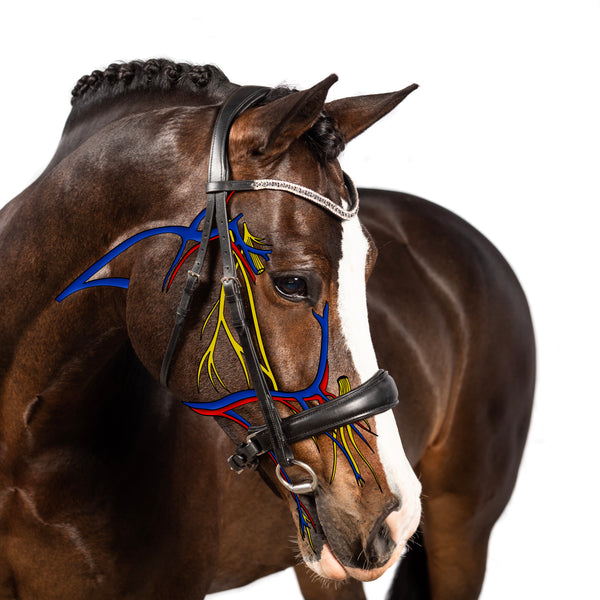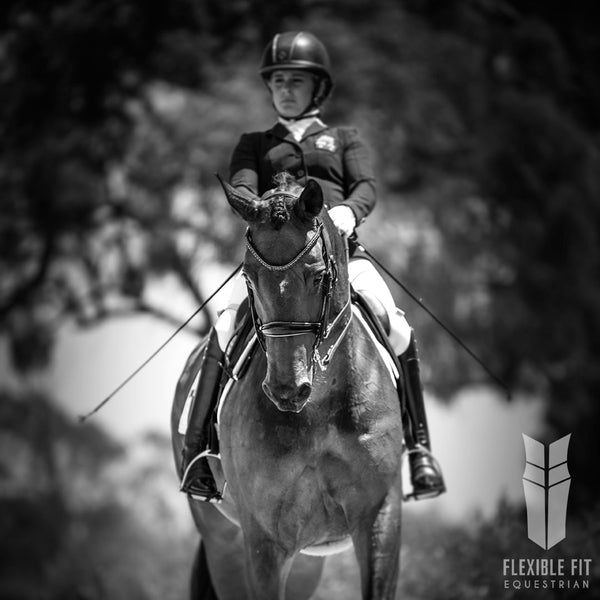
The Importance of Anatomy in Bridle Fit
- The vascular anatomy (blood flow)
- The temporomandibular joint (TMJ)
- The facial nerves and airway


We highly recommend you do further reading on the TMJ and the many ways it affects your horse.
Often the most talked about aspect of bridle fit is the nerves in the horse’s head. One of the main flowing nerve centres comes once again from the TMJ area, reinforcing how important browband and ear movement from the crownpiece is and how it impacts comfort.
The infraorbital foraman nerve centre sits just below the cheekbone and once again we cannot stress how important it is to make sure the noseband is 1-2 fingers below the cheekbone. This will avoid putting pressure on the centre of the nerve. As you can see nerve centres flow all around the horse’s face. This makes how you place the bridle and most importantly how tight you make the bridle parts a crucial part of the bridle fit process.
Tightening the noseband beyond two stacked fingers at the front of the noseband and the flash will restrict your horse’s ability to chew and relax. This will lead to tension, head tossing, evasion of the bit and even lack of engagement.
There is always much controversy over the type of closure on a noseband. It does not matter the style, any noseband can be tightened to cause pain. It is our responsibility to ensure our horses have the correctly fitted tack with the minimum pressure possible.
Flashes also cause controversy. They play a role in training for some horses and should only ever be used as an encouragement to close the mouth. The flash can restrict the airway if applied incorrectly. You should always, if using a flash, ensure that it is two stacked fingers lose. This will mean no pressure is applied at all if the mouth is closed or partially closed. Pressure will only be applied once the horse completely opens their mouth. Once they close it pressure shall be removed completely. If a flash is applied correctly, as a training tool, then no restriction on the airway will be possible.
Here at Flexible Fit Equestrian we are committed to ensuring your horse has the correctly fitted bridle and tack. We promise to go above and beyond to ensure a happy horse and rider!



 USD $
USD $
 SEK
SEK
 CAD
CAD
 GBP
GBP
 EUR
EUR
 DKK
DKK